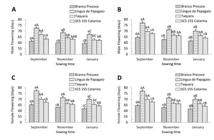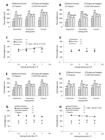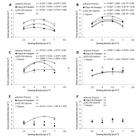ABSTRACT:
Family farmers preserve the tradition of cultivating maize landrace varieties because these plants have characteristics that hybrids lack. The greatest challenge in conserving in situ on-farm genetic diversity is avoiding gene flow and genetic introgression of transgenes to landrace varieties. Thus, farmers are obliged to change sowing times to guarantee temporal isolation since most farms are small, making spatial isolation impossible. The objective of the present work was to evaluate the behavior of maize landrace varieties submitted to different sowing times and densities in an agroecological system. The test was conducted in sub-sub-divided plots, where the main plot was represented by the sowing time, the sub-plot by the genotype, and the sub-sub-plot by the density, with three replications, for two consecutive years. The results demonstrate the effect of sowing time and density on the characteristics evaluated. In western Santa Catarina, the best time to sow seeds of maize landrace varieties in an agroecological system is in September, which is when the varieties expressed the greatest potential at densities from 45,000 to 50,000 pl.ha-1 , but it will not avoid transgene contamination.
Key words:
Zea mayz ssp. mays L.; in situ on-farm conservation; genotype x environment interaction; grain productivity.

 Thumbnail
Thumbnail
 Thumbnail
Thumbnail
 Thumbnail
Thumbnail
 Thumbnail
Thumbnail
 Thumbnail
Thumbnail




